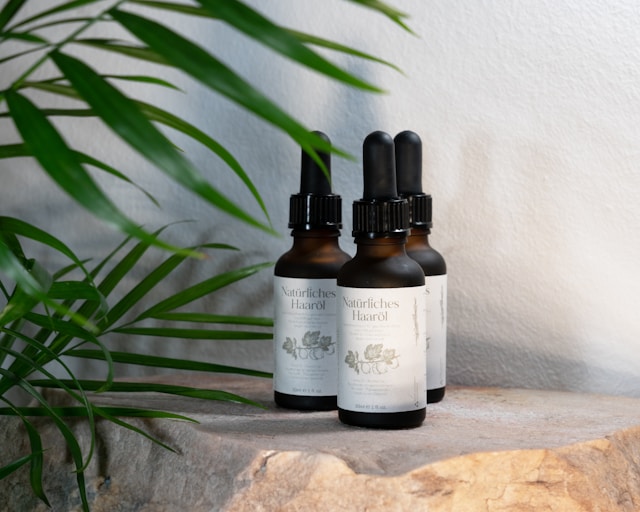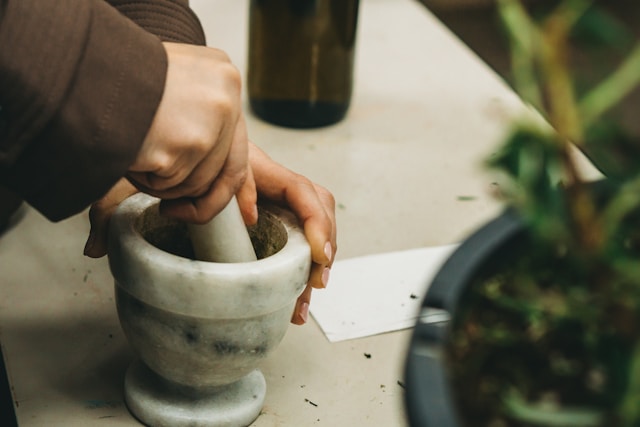
Rosemary is known to be one of the amazing herbs that find its usage in cooking, beauty and hair care products as well. We spoke to Dr Rinky Kapoor, Consultant Dermatologist, Cosmetic Dermatologist & Dermato-Surgeon, The Esthetic Clinics and Dr Monica Bambroo, Head of cosmetology and Dermatology at Artemis Hospitals on the process of making Rosemary oil at home.
Rosemary oil is derived from an aromatic herb called rosemary. Rosemary oil has antimicrobial, anti-inflammatory, anti-oxidant, anti-apoptotic, anti-tumorigenic, antinociceptive, and neuroprotective properties which are highly beneficial for your skin and hair. Rosemary oil is also used as a natural remedy for various health-related problems such as migraine, headaches, insomnia, depression etc. It is known for its anti-inflammatory properties, which help in soothing irritation, redness, puffiness, and itchiness on the skin. Rosemary oil is also believed to increase hair growth, improve scalp health, and reduce dandruff when used on the hair and scalp. It is very easy and simple to make rosemary oil at home.

Here are the ingredients you will need to make Rosemary Oil at home:

Here is the step-by-step process to make Rosemary oil at home:
Step 1: Prepare The Rosemary
Start by washing the rosemary sprigs thoroughly to remove any dirt or debris. Pat them dry with a clean cloth to remove excess moisture.
Step 2: Bruise The Rosemary
Using your fingers or the back of a spoon, bruise the rosemary sprigs slightly. This helps release the aromatic oils from the herb, enhancing the flavour and scent of the oil.
Step 3: Fill The Jar
Place the bruised rosemary sprigs into the glass jar. Depending on the size of your jar and how potent you want the oil to be, you can fill it halfway or pack it more densely for a stronger infusion.
Step 4: Add The Carrier Oil
Pour the carrier oil over the rosemary sprigs until they are completely submerged. Make sure you leave a little space at the top of the jar to allow for expansion.
Step 5: Seal The Jar
Secure the lid tightly on the jar to prevent any air from getting in. This helps in preserving the freshness of the rosemary and prevents the oil from spoiling.
Step 6: Infuse The Oil
Place the jar in a warm, sunny spot for around 1-2 weeks to allow the rosemary to infuse into the oil. You can shake the jar gently every day to help distribute the oils more evenly.

Step 7: Strain The Oil
After the infusing period is over, strain the oil using a fine-mesh strainer or cheesecloth to remove the rosemary sprigs and any debris. Squeeze down on the rosemary to extract as much oil as possible.
Step 8: Store The Oil
Transfer the strained rosemary oil (ways to use essential oil at home) into a clean glass bottle or container with a tight-fitting lid. Store it in a cool, dark place away from direct sunlight to keep it fresh.
Don't Miss: Benefits Of Oil Massage On Feet Before Sleeping
Don't Miss: DIY Hair Care: Harness The Power Of Panikoorka With This Homemade Oil Recipe
Follow the steps to make Rosemary oil at home.
Herzindagi.com is Jagran New Media's gender and lifestyle vertical, catering to women of all age groups, helping them remain updated, on-trend and aware. To improve our performance and understand our readers' interests better, we have created this poll. This will take 2 minutes of your time, do help us out with this link.
Image Courtsey: Freepik/Unsplash
Also watch this video
Herzindagi video
Our aim is to provide accurate, safe and expert verified information through our articles and social media handles. The remedies, advice and tips mentioned here are for general information only. Please consult your expert before trying any kind of health, beauty, life hacks or astrology related tips. For any feedback or complaint, contact us at compliant_gro@jagrannewmedia.com.